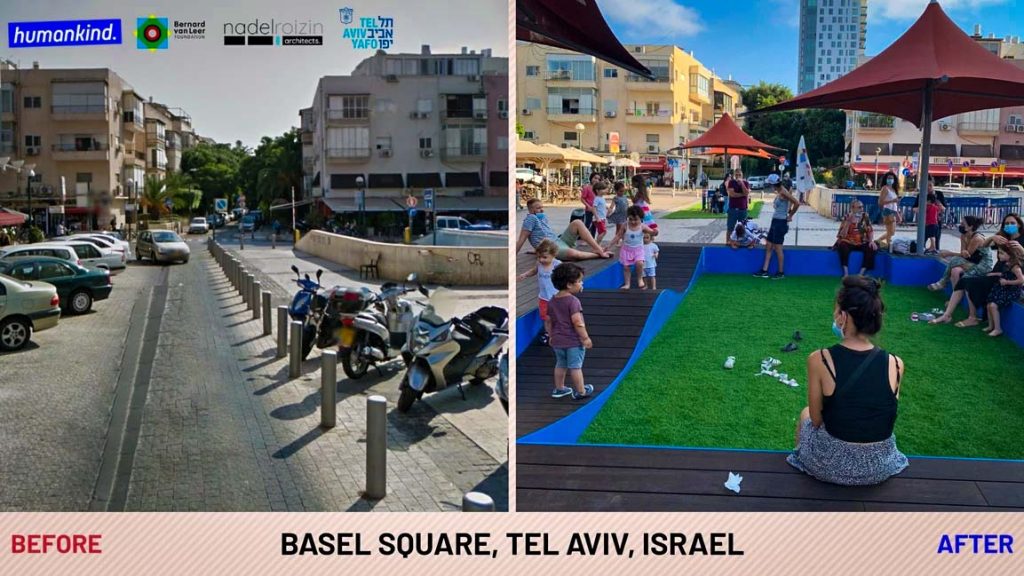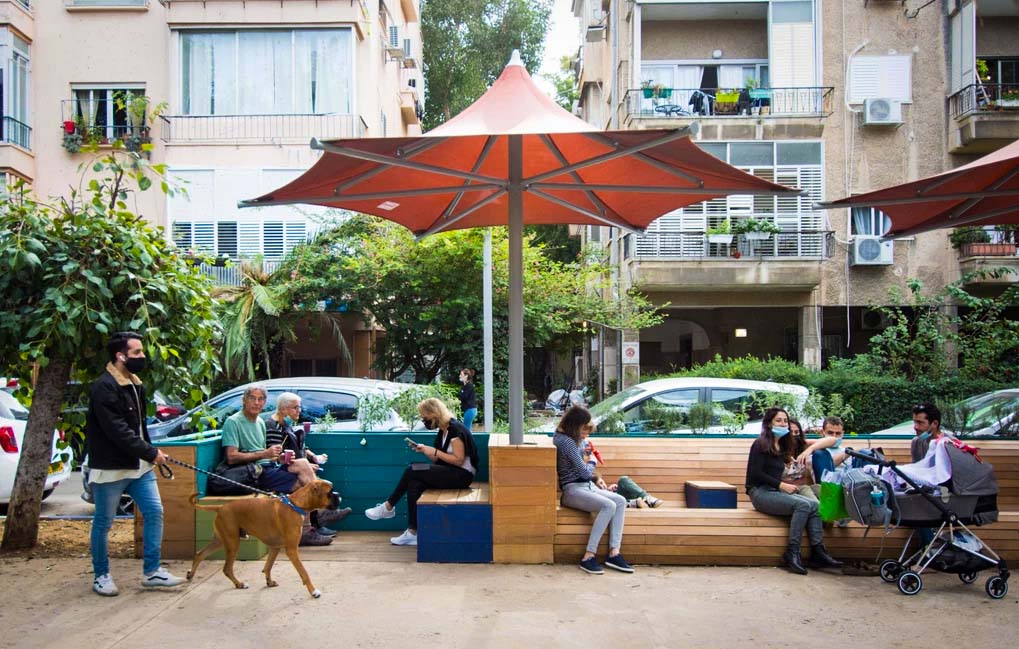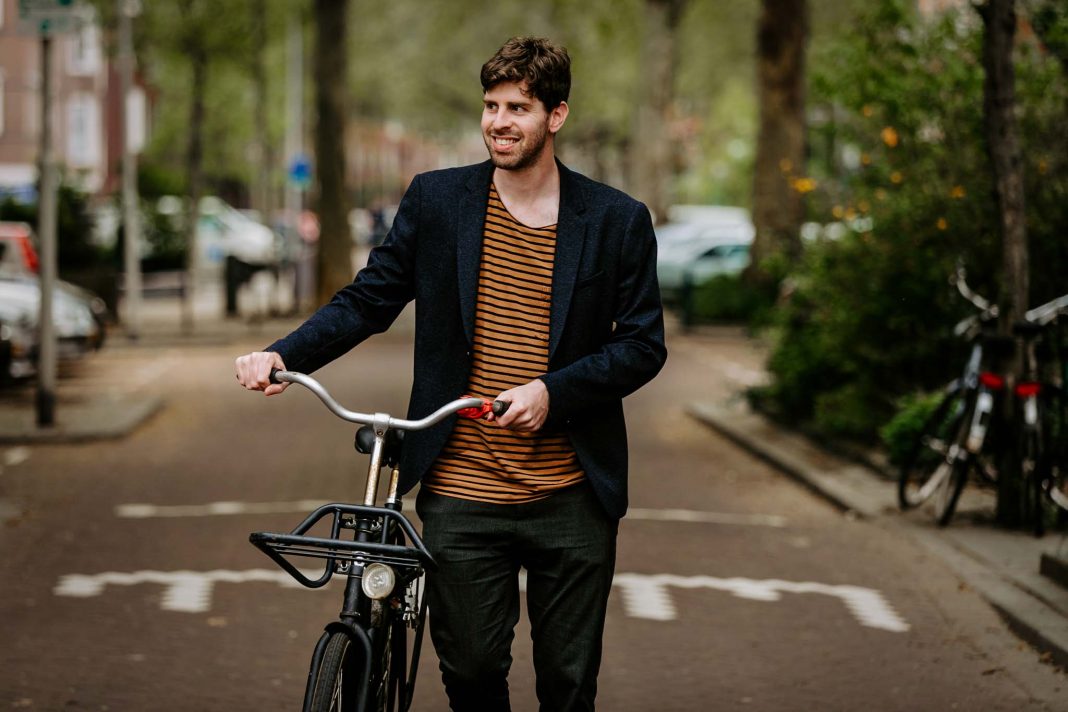Why are we obsessed with success and fearful of failure? Often, it’s the unexpected trials and tribulations that provide the most valuable learning opportunities. Lior Steinberg is a rarity: with so many irons in the fire, he happily admits when something doesn’t go quite right. Thankfully, he’s not afraid to talk about it.
Originally from Tel Aviv in Israel, Lior Steinberg finds himself settled in Rotterdam in the Netherlands. It is an accidental story. His first profession was as a computer programmer in the army. During these six years, he was always questioning “Why do traffic jams happen? When do they start? How do we solve it?”. But this was in Israel, where “there is no tradition of urban planning”. He just wasn’t exposed to it so didn’t see himself as part of the solution.
That all changed. “I read Jane Jacobs and Jan Gehl and then I realised, okay, that’s what I want to do.”
After a stint in Berlin, Lior went on to study urban planning in Stockholm and later in the Netherlands, where he finally “fell in love with cycling, with the way of living in Dutch cities”. It was there he founded Humankind, and now works “as an urban planner, consultant, and on urban-change projects”. It’s in this capacity that Lior has had the chance to experiment, to give people what they need and want. He’s not ashamed to say it hasn’t always worked. But often it has.
Tackle with Tech
As someone who is trying to change cities, Lior has an unusual enthusiasm for the progressive planner’s perennial thorn in the side: cars. “It is a mechanical horse; I mean it’s amazing! It truly changed our cities; we completely rebuilt our cities according to the car.” It’s ingrained in our 21st-century urban psyche. That takes a lot of undoing.
“Cities and decision-makers tend to believe that only the next technology will save us.”
Lior understands technology. He knows its capabilities. Using algorithms and artificial intelligence (AI), “we can find patterns that we didn’t know we can research”. That means we can solve the root causes of problems we didn’t even know existed. Maybe this is why Lior notices a lot of people shifting from digital professions to become urbanists. He puts it down to wanting to do something “more meaningful”.
Happiness Isn’t Only Smile Deep
“My first intuition was that I want to plan public spaces, where people smile.” A reasonable objective. Admirable, even. But Lior’s outlook is fluid, ever-changing. Or rather, he builds on it, layer by layer. He came to realise “those smiles in public space, they are not shallow”. Happiness “is not a constant state of being satisfied”, but rather people “feel relaxed enough to be vulnerable enough to smile”.
He refers to the happiest cities rankings. These are places “where people have enough social networks and social security to also be failing or sad or depressed or have an accident and be able to go to the hospital”.
Design places that bring people together, our expert advises. “It doesn’t mean that tomorrow, everybody will be out and hug each other”, he quips. But some will. Others will argue about politics. Some will play football, walk the dog, or go on dates. “I think that it’s just this fostering of connections that is the way toward urban happiness, whatever it means.”
What’s in a Word?
Watch Lior’s TED Talk and you may notice his use of the word ‘kind’. Having founded urban change consultancy Humankind, we asked the significance of this.
Those living in mixed cultural neighbourhoods in Rotterdam, which has a highly diverse population, vote left, while on the outskirts, people are generally “voting for the right”. Segregation breeds contempt. Loud music, a face you don’t know, a child running around – it’s all enough to get our heckles up: “It has no face, it has no story.” We tut, complain, judge.
“I think that if people meet each other more, they will be nicer to each other.”
So, Lior advocates for urban spaces that encourage interactions. To generate situations where people consider and can relate to others. Including those they see as different. The cities will not only be better, but we’ll also make them better for one another. Despite our complications and contradictions, we can be human and kind.
Passion Projects
Many a city could learn a great deal from Lior’s experiences. Here are some key findings from some notable Humankind initiatives.
Basel Square, Tel Aviv
Following months of lockdown due to COVID-19, the Tel Aviv city administration realised that people were craving better outside spaces. “It was a moment of revelation for a lot of urbanites and decision-makers.” Many had lost their jobs; others were working from (cramped) homes. The city approached Lior and his team to repurpose a series of public spaces, including a former carpark closed due to the drop in traffic. It became Basel Square.
A wealthy part of town with copious numbers of cars, this was met with tremendous opposition. Even anger. But up until that point, “everybody spoke about mobility” but not function for “the silent majority” who wanted somewhere to sit or play with their grandchildren, etc. Lior knew the way to catalyse change was to reframe the approach to citizen participation: “We didn’t ask anything about ‘do you agree to remove a car or not?’ because this was a given. The cars are out! Sorry.” Instead, they asked: “What do you actually want?”.
Working with other organisations, Lior says, really gave this project “power”. Together with the Bernard van Leer Foundation’s Urban95 initiative, Lior and co. sought to create spaces for the city’s youngest citizens.
The result: playing places for children. “In Tel Aviv, there are so many children and families that if you put a play area there for children, it will be filled with children.” So, it was a success. “And then good luck with asking to remove children and putting cars” back instead.

Open Gym, Groningen
A gym in a public space with free membership and lessons? Sounds like a crazy dream – but sometimes they become reality. Groningen’s Open Gym is exactly that.
“In different places in the city at different times, there are coaches that give sports lessons for free. To very, very, very beginners like me, like people really don’t like sport and feel ashamed to do sports outdoors. So, this is a way to activate and invite people to the public space.”
Open Café, Tel Aviv
In recent times, Tel Aviv has become known for hipsters working the whole day in cafés. Really, the whole day. Something Lior loves about the local café culture is round-the-clock opening. 24/7. “If you have an idea for a startup at 2am, you just go to one of the quite a few cafes that are open” and work on it.
So, they thought, “why not bring this to the public space?”. And so, the Open Cafe was conceived. An accessible working area with desks, laptop charging stations, space to read, tables for takeaways… value and function from converting parking spaces.

Image credit: Nadel Roizin Architects 
Image credit: Nadel Roizin Architects
Challenges
When asked if he has faced any challenges, Lior responds tongue-in-cheek saying they need a dedicated portfolio on the website for failed projects.
The Time, The Place
Urban planners have a reputation. They don’t listen. Even meetings with pretty invitations, conducted at convenient times and locations or online can’t trump the preconceived notion that citizens’ voices won’t be heard.
Then there’s the fact that projects can take time to implement, while people live their busy lives in the here-and-now.
“I cannot expect a carpenter or an accountant or a computer programmer, or a teacher to give two hours of her time to come for a meeting about something that will happen in a few years.”
The answer is working from the ground up. Humankind aims to improve the “culture of participation, a culture of cooperation”. It doesn’t start with a letter from the administration, but with a citizen-led idea.
“When someone is more involved because he and his neighbours have decided to do a festival in the streets every two months, then they know how regulations work with closing the street, and who is the security person in the neighbourhood you need to speak with in order to make it happen. Once this starts and those sorts of actions start, then you can come to someone because they are already in the story ‘We have this challenge because we want to remove cars, but we see that we will have two little parking spots but then we can build a park, but what do you think about it?’”
And if we follow up with the impact and explain it, we capture people’s interest. But “if you just come once every few years and then do nothing with this knowledge, then you will never be able to reach the people who are not involved”.
The Usual Suspects
Citizen participation can be tricky ground. Consultations usually “ended up having mostly the usual suspects”. These tend to be “the well-informed professionals that live in the neighbourhood” – probably those for whom a city is traditionally built. Others are hard to engage because “the majority of people have other important things to do” such as “real work that pays for the bills”.
Even an active, inclusive urbanism protagonist like Lior can find it “very difficult to get the people that actually live their life outside of the urbanism world. And then we sometimes had to delay the project, to say we need more time or even failing and going on with the project without all the input”. In this situation, temporary measures can bridge that gap.
Tactical Urbanism
It has to be expected that, if attempting so many projects, some won’t quite hit the mark. “Every few projects that you started just stopped because someone was too scared, or you didn’t get enough support either from the municipality or from the local people.”
If people don’t believe what you’re proposing can work, “they will not let you experiment”. Tactical urbanism is the practice of installing temporary, often cost-effective, measures to test the potential for long-term, scalable change. Little cost, little effort, big potential.
Humankind has put parklets in place of parking spaces to see if people use them, or if it really does cause chaos for drivers. If it doesn’t work, they remove and revert it and “delay the change for next years or even a decade”.
But Lior doesn’t see it as a failure. “I hoped those interventions would work but it’s also, I think, a success because we didn’t spend tons of time or tons of money on them.” They tried, it didn’t work, so they can regroup and consider what other solutions “or which other streets we should focus our efforts on”.
A Plague of Vague
Urban planning deals with a lot of things, admits Lior. Zoning, mobility, greenery, etc. It’s varied, not an exact science. So really, are urban planners best left to construct our cities?
“I would be very happy that people that studied ecology will also learn a little bit about cities, and then they can bring to the table much more than I can bring about greenery.”
It’s also true for “someone who knows something about materials” who gets excited about reinventing how we collect the rubbish. Or a biologist with expertise in natural systems: “this can be very useful to understand how people move in the city because, in the end, it’s also a very complex system”.
Looking Forward
Lior disrupts the narrative. While many urbanists push for more 15-minute cities, he considers them common in western Europe already. Now, he suggests, it’s time for the next step: mayors should commit to making it possible for children to reach school or a playground without ever having to cross a road.
Radial change first requires a vision like this, then a solution. For Lior, the answers will come from bridging the gap between urban happiness and technology.
With tech, we can “reclaim” the city for walking, cycling, moving around safely. “Mobility is just you moving from A to B in order to do things.” Fifteen-minute cities “offer more of those ABCDs closer to you” but digital solutions allow us “to measure it in a better way and then offer planning recommendations to make neighbourhoods better”. If done right.
“We see it all around that actually algorithms create more problems if you don’t use them smartly.”
That’s why Lior aims to reconnect with his programming roots; to investigate “what should be solved with algorithms and whatnot, and what is actually helpful to use technology for, and what we should stay out of”.
It’s a wide net to cast – with privacy, legal and philosophical questions intertwined. But like tactical urbanism, AI and digital simulations offer better, cheaper ways to test revolutionary approaches to decades-old problems. This can be achieved if we “set the boundaries, decide what we want to achieve with technology”. And make sure to use it in conjunction with citizens’ voices.
That’s Not All, Folks!
We can benefit yet further from the so-called ‘failures’ that Lior mentions; they have shaped this trailblazer’s evolving approach to urban planning, and we have collated his top tips mainly for municipalities. Head over here to see what he had to say.


